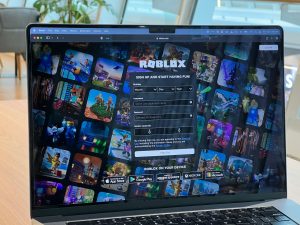FreeSync and NVIDIA: Are They Compatible? Here’s What You Need to Know

AMD FreeSync is widely known for helping to synchronise a monitor’s refresh rate with a graphics card’s framerate to ensure smoother, tear-free gameplay. It’s AMD’s answer to screen tearing and stuttering in gaming. But what if you’ve got a FreeSync monitor and an NVIDIA graphics card? Fortunately, since 2019, the two have become more compatible than ever — provided a few key requirements are met.
Is FreeSync Compatible with NVIDIA GPUs?
Yes — many NVIDIA graphics cards support FreeSync, thanks to NVIDIA’s introduction of G-Sync Compatibility. While FreeSync was originally designed for AMD GPUs, NVIDIA expanded support in 2019 by introducing a software-based version of G-Sync. This allowed specific monitors certified as “G-Sync Compatible” to work with select NVIDIA cards.
If you already own a FreeSync monitor, you don’t necessarily need to replace it for full G-Sync functionality. However, you should consult NVIDIA’s official list of G-Sync Compatible displays. Not all FreeSync monitors are guaranteed to perform correctly — some may fall outside NVIDIA’s required refresh rate ranges. Monitors that support “G-Sync” or “G-Sync Ultimate” offer direct hardware support and aren’t reliant on software compatibility.
Supported NVIDIA Graphics Cards
FreeSync compatibility applies to GeForce GTX 10- and 16-series cards, such as the GTX 1080 Ti, as well as all GeForce RTX cards starting with the 20-series. This includes the RTX 2060, 3060, 4070, and beyond. However, to take advantage of this feature, your system must be running Windows 10 or a later version. Just as important, the monitor must be connected using a DisplayPort 1.2 cable or newer. HDMI connections won’t work for enabling FreeSync on NVIDIA GPUs.
How to Enable FreeSync with an NVIDIA GPU
If you’re ready to activate FreeSync on your NVIDIA-powered PC, here’s a simple step-by-step guide:
-
Update Your Drivers
Ensure your graphics drivers are fully up to date. You can do this through the GeForce Experience app or by manually downloading the latest version from NVIDIA’s website. -
Restart Your PC
A fresh restart helps ensure that all new drivers and changes are properly applied. -
Check Monitor Settings
Use your monitor’s on-screen menu to confirm that FreeSync is enabled. The exact wording may vary — it might be under gaming, display, or adaptive sync options. -
Force Enable via NVIDIA Control Panel
Open the NVIDIA Control Panel. Go to “Manage 3D settings,” find the “Monitor Technology” dropdown, and select “G-SYNC Compatible.” -
Adjust Refresh Rate and V-Sync
While still in the Control Panel, make sure “Preferred refresh rate” is set to “Highest available.” You should also enable “Vertical sync” if you want consistent frame pacing, though in that case, be sure to disable any in-game V-Sync settings to avoid conflicts. -
Set Up G-SYNC in the Control Panel
On the left-hand sidebar, select “Set up G-SYNC.” Tick both the “Enable G-SYNC, G-SYNC Compatible” and “Enable settings for the selected display model” checkboxes. Click “Apply” to activate the changes.
Final Thoughts
Thanks to NVIDIA’s efforts in expanding G-Sync Compatibility, gamers no longer need to commit exclusively to one ecosystem. If you’ve got a FreeSync monitor and an NVIDIA GPU from the last several generations, chances are good that you can enjoy the benefits of variable refresh rate technology without investing in new hardware. Just be sure to follow the setup steps carefully, and always verify that your monitor is on the official compatibility list for the best experience.






